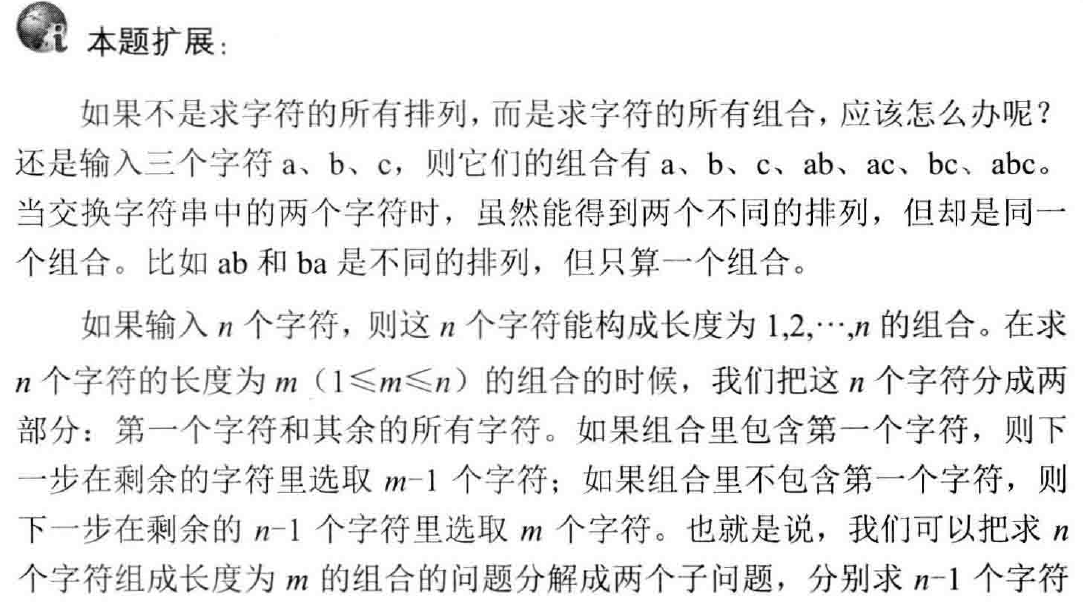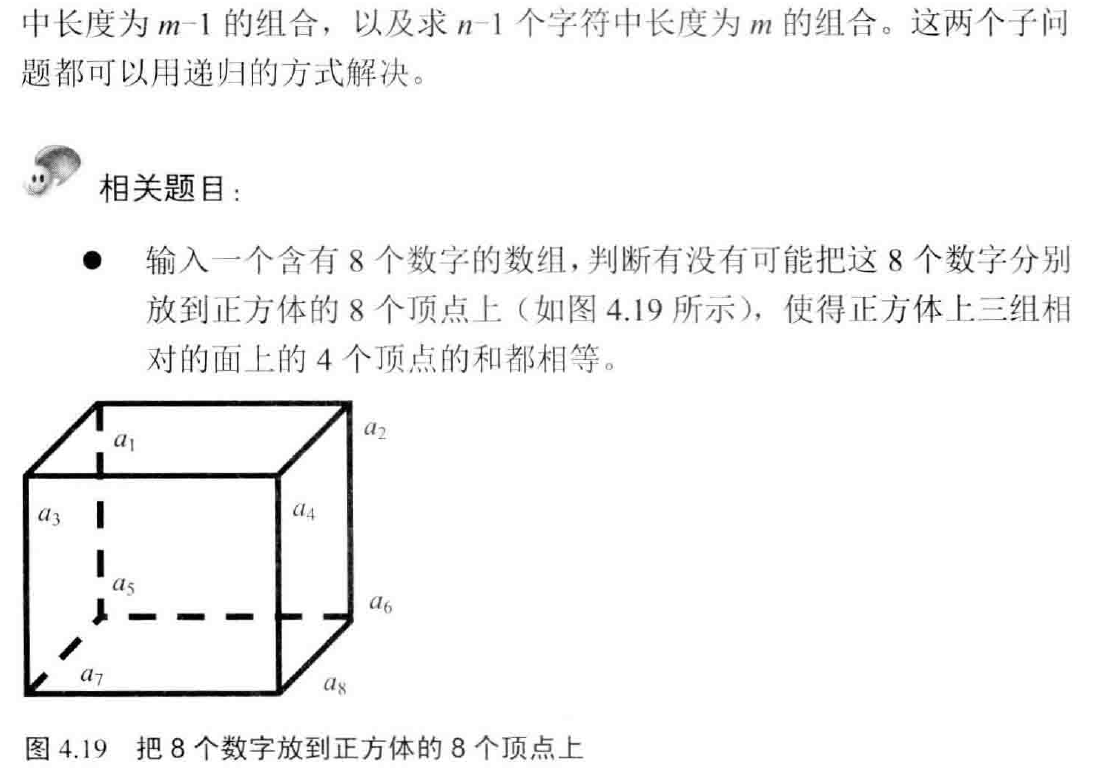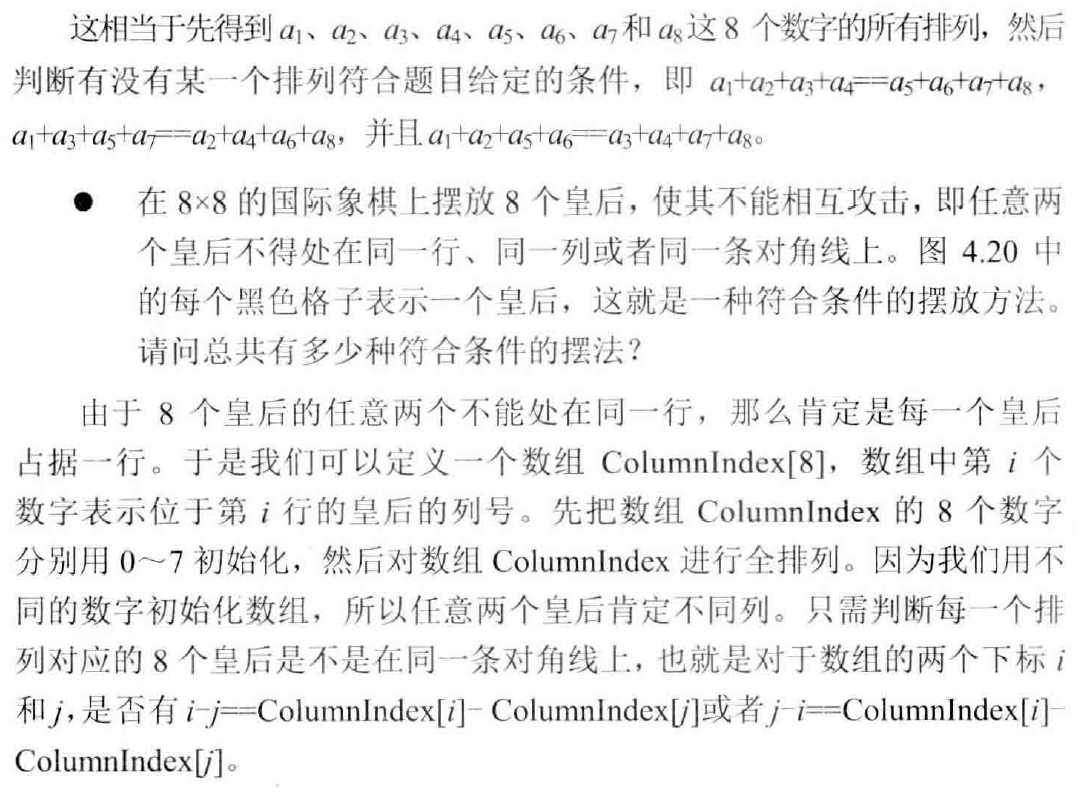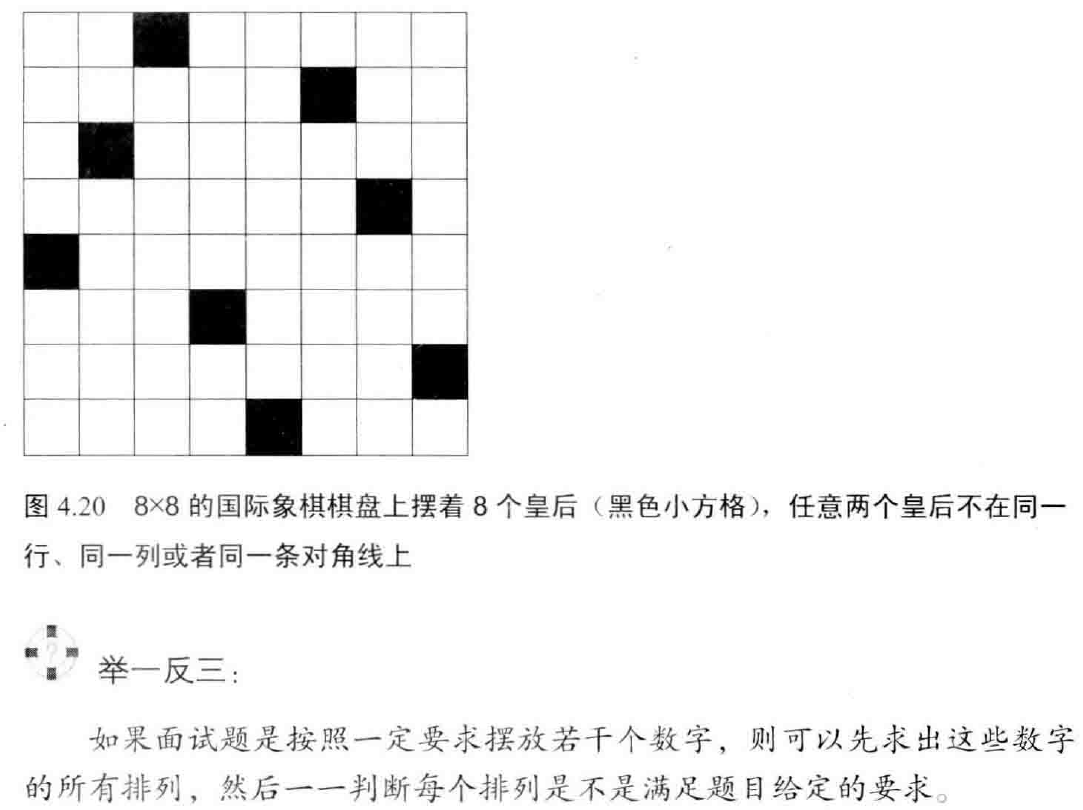// 面试题38:字符串的排列
// 题目:输入一个字符串,打印出该字符串中字符的所有排列。例如输入字符串abc,
// 则打印出由字符a、b、c所能排列出来的所有字符串abc、acb、bac、bca、cab和cba。
#include <iostream>
void Permutation(char* pStr, char* pBegin);
void Permutation(char* pStr)
{
if (pStr == nullptr)
return;
Permutation(pStr, pStr);
}
void Permutation(char* pStr, char* pBegin)
{
if (*pBegin == '\0')
{
printf("%s\n", pStr);
}
else
{
for (char* pCh = pBegin; *pCh != '\0'; ++pCh)
{
char temp = *pCh;//先看有多少个可能的排头,为每个排头做递归处理
*pCh = *pBegin;
*pBegin = temp;
Permutation(pStr, pBegin + 1);
temp = *pCh;//还得交换回来
*pCh = *pBegin;
*pBegin = temp;
}
}
}
// ====================测试代码====================
void Test(char* pStr)
{
if (pStr == nullptr)
printf("Test for nullptr begins:\n");
else
printf("Test for %s begins:\n", pStr);
Permutation(pStr);
printf("\n");
}
int main(int argc, char* argv[])
{
Test(nullptr);
char string1[] = "";
Test(string1);
char string2[] = "a";
Test(string2);
char string3[] = "ab";
Test(string3);
char string4[] = "abc";
Test(string4);
system("pause");
return 0;
}
![]()
![]()
![]()
![]()










 浙公网安备 33010602011771号
浙公网安备 33010602011771号